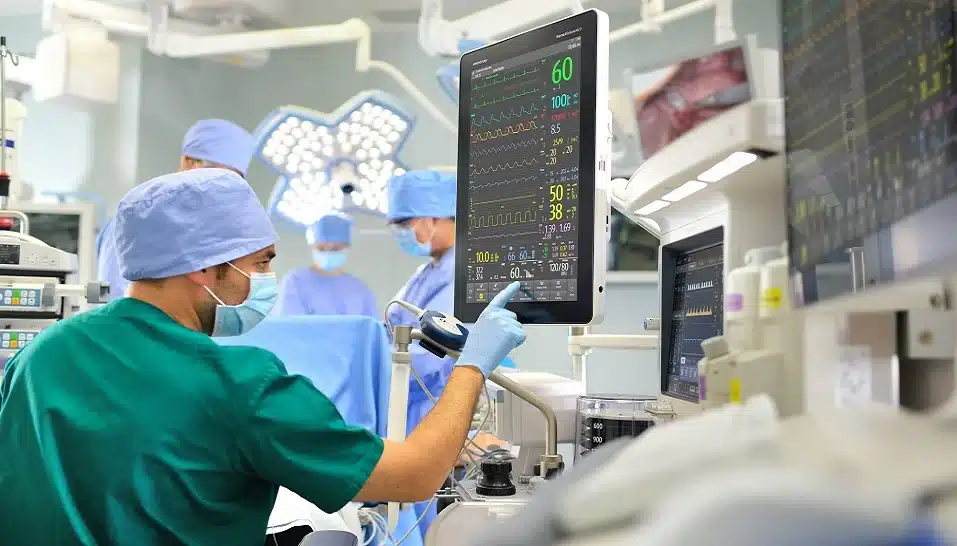Hospitals in India’s national capital, Delhi, are running out of beds, and a surge in COVID-19 positive patients is complicating the problem even further. While the government says there are enough facilities and beds available in Delhi, the ground situation is grim. Our exclusive report.
After spending 68 days in lockdown, finally, India begins to ease restrictions imposed on people and vehicular movements as the country enters the new phase of reopening, called Unlock 1.0.
Meanwhile, as inter- and intra-state travel is being allowed without e-pass, the new set of guidelines is drawing more people into the streets and on the roads.
Come June 8, with the phased opening of the country, crowds thronging malls and places of worship will be another cause of concern for the Centre and States. While cases are already rising faster than before in India, flouting social distancing norms could further worsen the situation.
Sample this: As India entered the first day of unlock 1.0 on June 1, the number of COVID-19 cases continued to rise. The National Capital, Delhi reported 990 fresh cases on the first day after the government announced more relaxations.
And, if numbers are anything to go by, Delhi reported 320 new cases of COVID-19 as of June 5, taking the total number of cases to 27654.
A total of 761 people have succumbed to the disease so far.
Right from the doubling rate of infections to the death rate that has shot up from a few dozen in mid-April to more than 700 now, Delhi is in the grip of a coronavirus crisis. But the State government is finding it hard to believe.
In fact, patients across the National Capital have been facing tough times in getting beds to get admitted to COVID-designated hospitals.
However, in response, the government has denied these reports and has been consistent that the AAP government’s new app – Delhi Corona has been launched to bridge the information gap between the citizens and the hospitals in their fight against the COVID-19 pandemic.
Even though the app is supposed to be operating in real-time, in a recent statement to the media, Delhi health minister Satyendar Jain said that some hospitals may be updating data late on the app.
But as the number of coronavirus cases soars, questions have been raised about the shortage of beds and whether Delhi’s infrastructure can cope with the rise in COVID-19 cases and patients with other health conditions at the same time.
Therefore, to check the reality of what’s going on in Delhi hospitals, we decided to investigate the matter further.
Like several patients and their families in Delhi, we too found a discrepancy in the number of beds reflecting on the app and on the ground. Even the experience of finding a COVID bed in the city was far too tedious.
According to the app, as of June 6, the number of beds earmarked for the treatment of COVID-19 in both private and government hospitals in Delhi was 8,645. Of these, 4038 beds were occupied and the remaining 4607 were vacant.
With Delhi reporting almost 1000 cases every day, we decided to start with the three bigger government COVID-19 facilities which showed some vacant beds on the app. However, our calls to all the three — Lok Nayak Hospital, Safdarjung Hospital, and Satyawadi Raja Harishachandra Hospital either went unresponsive or were abruptly cut.
Our next call was to one of the country’s largest hospitals, All India Institute of Medical Sciences (AIIMS) New Delhi. The hospital has converted its sprawling Trauma Centre building into a COVID-19 treatment hospital.
With 260 COVID beds, AIIMS has the largest pool of ventilator beds in the Capital. And if reports are to be believed they are too filling up fast. “Our general beds and O2 beds are full, and with the current pace at which patients are getting admitted, I am sure very soon we will be short of ventilator beds as well,” said a medical staff working on a COVID shift.
“With a surge in the number of cases, we surely need more O2 beds,” he emphasised.
Meanwhile, to combat the shortage of beds and to avoid the situation to get out of hand, the administration at AIIMS has decided to admit only the symptomatic patients or the ones who need supportive care. “We too have a limited capacity. Therefore, to keep the situation under control, we are asking asymptomatic COVID patients to practice home quarantine,” said another source on the condition of anonymity.
Among private hospitals, we called up Max Shalimar Bagh, Fortis Shalimar Bagh, Dr. BL Kapur Memorial Hospital, and Tirath Ram Shah Ch. Hospital. On the app, these hospitals showed that beds and ventilators were available at the time of our calling. However, when we called up the establishment, authorities in each of the three hospitals told us that they were fully occupied.
The two central issues we faced were difficulty in communicating with hospitals due to medical staff being overwhelmed and inbuilt processes within hospitals that aren’t user-friendly.
For instance, the wait time for each hospital was between 10-15 minutes. This is, however, indicative of hospitals being short-staffed in terms of operators.
Besides, for hospitals like Fortis, Max, and BLK Memorial, all automated voice-instructions directing people to emergency extensions, and appointment lines are in English. Let’s say, if someone is unable to communicate in English or is unable to understand the language, they are left to wait for another 8-10 minutes until an operator gets free to answer the call.
That kind of wait time results in crucial time being wasted in getting the patient much needed medical attention, especially in the case of a medical emergency.
Besides, the incorrect information being uploaded onto government portals regarding COVID-19 bed vacancies was a cause of concern. As most of the time, it did not tally with a position on the ground.
“Clearly the issue is not with the app, but some hospitals are not updating the data on Delhi Corona on time or misrepresenting actual data when patients call,” told health minister Satyender Jain during his media briefing.
The plight of non-COVID and Co-morbid patients
But it is not just COVID-19 positive cases, even the co-morbid patients are facing the shortage of beds in the city.
In fact, it appears that the health infrastructure in the national capital is stretched thin leading to an even bigger healthcare crisis.
“I have to operate on a cancer patient this week. As a surgeon, my dilemma is where will I shift the patient post-surgery because 80 percent hospital has been converted into COVID-19 dedicated treatment facility,” says Dr. Vipin Tyagi, Consultant Urologist, and Robotic Surgeon at Sir Ganga Ram Hospital New Delhi.
In fact, at Delhi’s premier Sir Ganga Ram Hospital it has been a struggle ever since the Delhi government has directed the hospital authorities to convert them into COVID-19 dedicated facility.
In a recent development, the hospital has also been asked to stop corona testing for violating COVID-19 regulations specified under the Epidemic Disease Act 1987. “But, that’s unethical. What if unknowingly we perform surgery and later, the patient turns out to be COVID-19 positive – it can risk the patient’s life and lives of medical staff and surgeons inside the OT,” he said.
According to Dr. Tyagi, the mortality rate of COVID-19 cases is lesser than the mortality rate of co-morbid patients in the city.
With chemo sessions on hold, pending surgeries for heart and kidney patients delayed, patients are scared of what lies ahead of them in the coming days. “If not due to COVID-19, we may die of lack of proper and timely medical intervention,” said 62-year-old Mahesh who is a diabetic.
A few weeks back Mahesh was diagnosed with a stone in his gall bladder. But, every time he calls his doctor, he is advised to postpone the surgery, at least till the time things get a little better in the hospital as being diabetic puts him at greater risk for complications from the virus.
HealthLEADS sent queries about the situation to a Delhi government spokesperson as well as Deputy CM Manish Sisodia. This article will be updated if they respond.

















